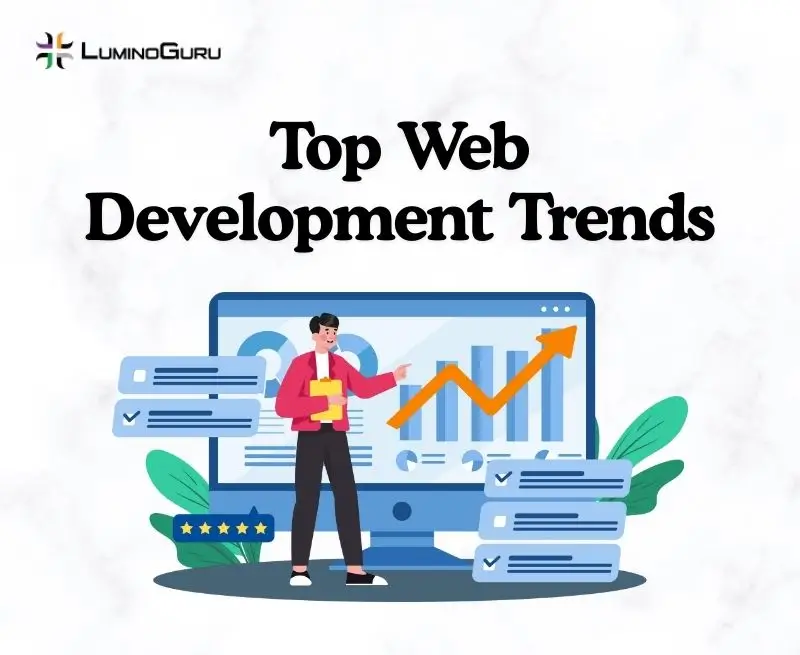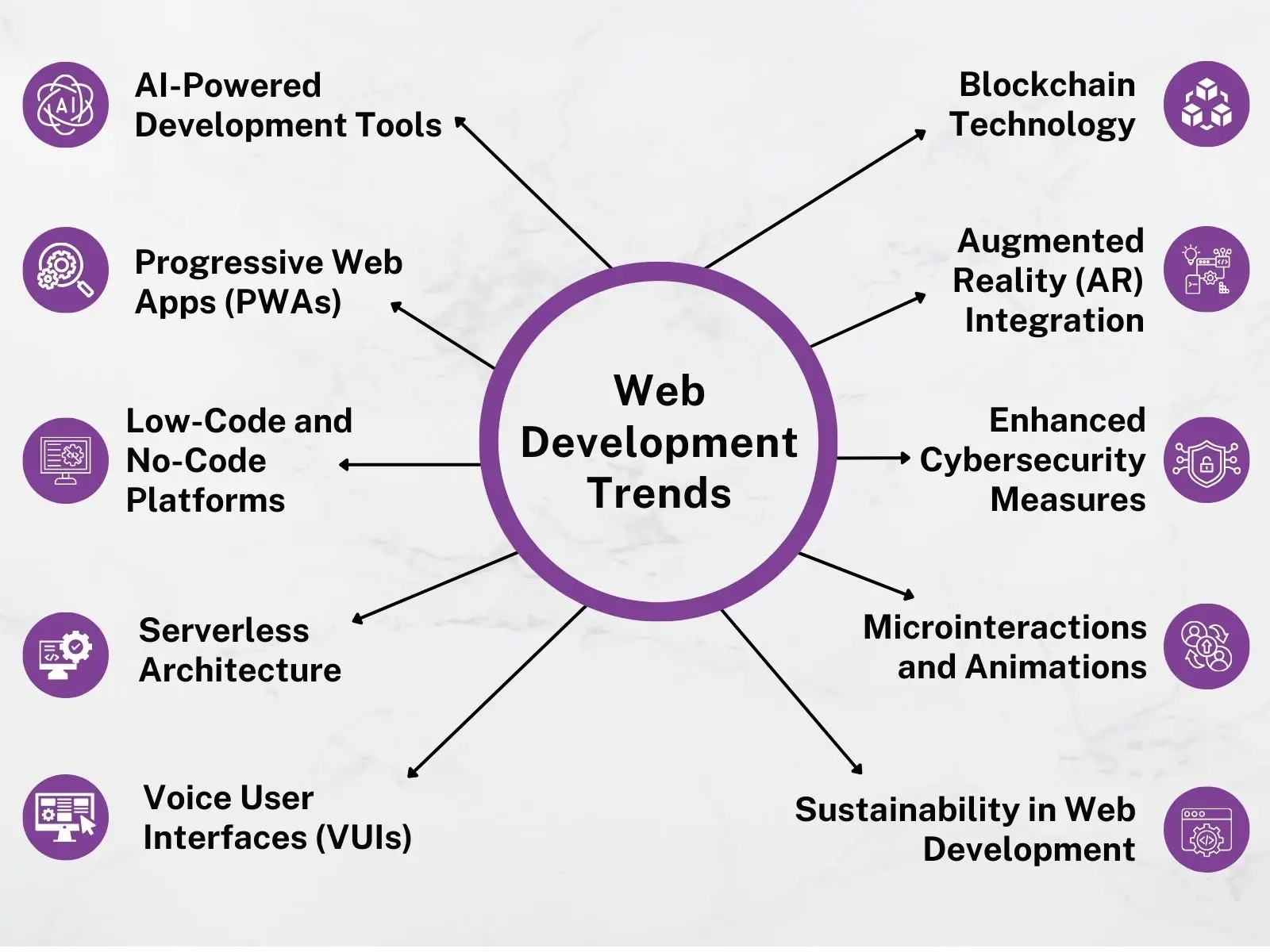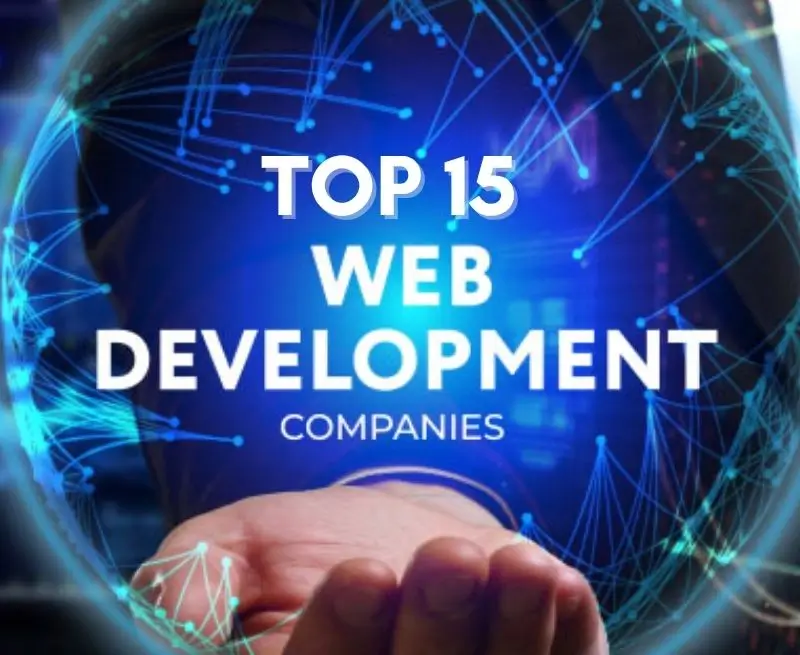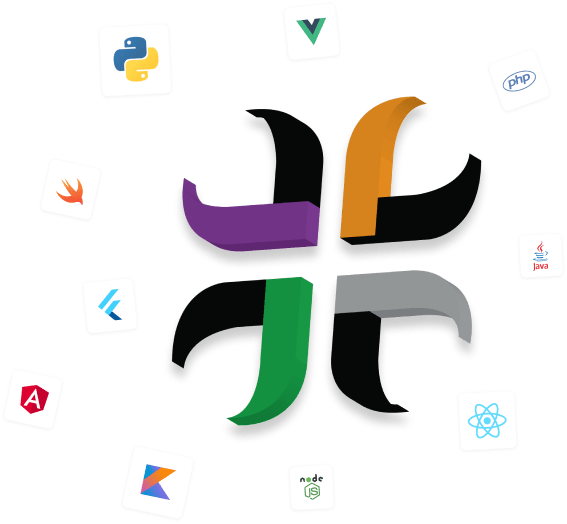
The digital landscape is evolving at an unprecedented pace, reshaping how businesses, developers, and users interact online. As we move into 2025, simply having a website is no longer enough—websites need to be faster, smarter, more interactive, and designed to meet ever-growing user expectations. Staying ahead of the latest developments is essential, which is why understanding the 10 Top Web Development Trends for 2025 has become a critical necessity for businesses that want to remain competitive in the digital era.
From AI-powered development tools that simplify coding and automate repetitive tasks to Progressive Web Apps (PWAs) that offer app-like experiences without requiring installation, these trends are transforming the way websites are built and experienced. Low-code/no-code platforms empower non-technical users to create dynamic sites, while serverless architectures enable scalable, efficient, and hassle-free backend management. On the front-end, innovations like voice user interfaces, microinteractions, and augmented reality integration are revolutionizing user engagement, making websites more intuitive, immersive, and accessible than ever before.
At the same time, enhanced cybersecurity measures and sustainable web development practices ensure that websites remain secure, reliable, and environmentally responsible. Embracing these 10 Top Web Development Trends can dramatically improve website performance, boost user experience, and position businesses for long-term digital success in an increasingly fast-paced and competitive online world.
To thrive in the evolving digital landscape, businesses must adopt emerging technologies. Here are the top trends shaping the future of web development.

1. AI-Powered Development Tools
-
Challenges Users Faced Before
Developers often grappled with repetitive coding tasks, debugging challenges, and time-consuming manual processes. This led to longer development cycles and potential burnout.
-
Why Should You Choose AI Tools?
AI-powered tools like GitHub Copilot and Tabnine offer real-time code suggestions, automate repetitive tasks, and assist in debugging, significantly enhancing developer productivity.
-
Examples
- GitHub Copilot: Assists developers by suggesting entire lines or blocks of code.
- Tabnine: Provides AI-driven code completions tailored to individual coding styles.
-
AI-Powered Development – Benefits
| Benefit | Description |
| Accelerated Development | AI-powered tools reduce coding time and automate repetitive tasks, speeding up the development cycle. |
| Reduced Errors | Automation minimizes human errors in coding, improving code quality. |
| Enhanced Developer Productivity | Developers can focus on complex logic rather than repetitive tasks, increasing efficiency. |
2. Progressive Web Apps (PWAs)
-
Challenges Users Faced Before
Users experienced slow load times, limited offline capabilities, and the need to download separate apps, leading to increased bounce rates.
-
Why Should You Choose PWAs?
PWAs combine the best of web and mobile apps, offering fast loading times, offline access, and the ability to add to home screens without installation.
-
Examples
-
- Twitter Lite: A lightweight version of Twitter that offers fast performance even on 2G networks.
- Starbucks PWA: Allows users to browse the menu and place orders offline.
-
Progressive Web Apps (PWAs) – Benefits
| Benefit | Description |
| Improved User Engagement | PWAs offer fast loading times and offline access, keeping users engaged. |
| Lower Bounce Rates | Quick, responsive performance reduces the chances of users leaving the site. |
| Cost-Effective | No need to maintain separate mobile apps, saving development and maintenance costs. |
3. Low-Code and No-Code Platforms
-
Challenges Users Faced Before
Non-technical users struggled to bring their ideas to life due to the complexity of traditional development processes.
-
Why Should You Choose LC/NC Platforms?
These platforms empower users to build applications without extensive coding knowledge, democratizing app development.
-
Examples
-
- Webflow: A visual web design tool that allows users to design, build, and launch responsive websites.
- Bubble: A platform for building fully functional web applications without code.
-
Low-Code/No-Code Platforms – Benefits
| Benefit | Description |
| Faster Time-to-Market | Users can launch applications quickly without writing complex code. |
| Reduced Development Costs | Less reliance on professional developers lowers expenses. |
| Empowered Non-Technical Users | Allows anyone to innovate and create without deep coding knowledge. |
4. Serverless Architecture
-
Challenges Users Faced Before
Managing servers, scaling infrastructure, and handling maintenance were complex and resource-intensive tasks.
-
Why Should You Choose Serverless?
Serverless architecture allows developers to focus solely on code, with the cloud provider handling infrastructure management.
-
Examples
-
- AWS Lambda: Executes code in response to events without provisioning or managing servers.
- Google Cloud Functions: A lightweight, event-based serverless compute solution.
-
Serverless Architecture – Benefits
| Benefit | Description |
| Scalability Without Hassle | Automatically adjusts resources based on demand. |
| Cost Efficiency | Pay only for actual usage instead of maintaining servers. |
| Simplified Backend Management | Developers can focus on coding instead of infrastructure. |

Read More: Top 15 Web Development Companies in 2025
5. Voice User Interfaces (VUIs)
-
Challenges Users Faced Before
Traditional interfaces required manual input, which could be cumbersome, especially on mobile devices.
-
Why Should You Choose VUIs?
VUIs enable hands-free interaction, enhancing accessibility and user experience.
-
Examples
-
- Amazon Alexa: Allows users to interact with devices using voice commands.
- Google Assistant: Facilitates voice interactions for various tasks.
-
Voice User Interfaces (VUIs) – Benefits
| Benefit | Description |
| Improved Accessibility | Enables hands-free interactions for all users, including those with disabilities. |
| Enhanced User Engagement | Natural voice interactions create a more interactive experience. |
| Faster Task Completion | Users can perform actions quickly without typing or navigating manually. |
6. Blockchain Technology
-
Challenges Users Faced Before
Centralized systems were prone to data breaches and lacked transparency.
-
Why Should You Choose Blockchain?
Blockchain offers decentralized, secure, and transparent systems, ensuring data integrity and trust.
-
Examples
-
- Ethereum: A decentralized platform that runs smart contracts.
- Hyperledger: An open-source project for developing blockchain-based distributed ledgers.
-
Blockchain Technology – Benefits
| Benefit | Description |
| Enhanced Security | Decentralized systems reduce the risk of hacks and data breaches. |
| Transparency and Trust | Every transaction or data point is verifiable and immutable. |
| Reduced Fraud | Smart contracts and secure ledgers minimize unauthorized actions. |
7. Augmented Reality (AR) Integration
-
Challenges Users Faced Before
Users had limited ways to visualize products before purchase, leading to uncertainty and dissatisfaction.
-
Why Should You Choose AR?
AR allows users to visualize products in real-world settings, enhancing their shopping experience.
-
Examples
-
- IKEA Place: Let users visualize furniture in their homes before purchasing.
- Sephora Virtual Artist: Allows users to try on makeup virtually.
-
Augmented Reality (AR) Integration – Benefits
| Benefit | Description |
| Better Visualization | Users can view products in real-world settings before purchasing. |
| Reduced Product Returns | Accurate visualization decreases purchase mistakes. |
| Immersive Experience | AR creates interactive, engaging user experiences. |
8. Enhanced Cybersecurity Measures
-
Challenges Users Faced Before
Data breaches and cyberattacks compromised user trust and safety.
-
Why Should You Choose Enhanced Security?
Implementing robust security measures protects user data and builds trust.
-
Examples
-
- Multi-Factor Authentication (MFA): Adds an extra layer of security by requiring multiple forms of verification.
- End-to-End Encryption: Ensures that data is only accessible to the sender and recipient.
-
Enhanced Cybersecurity Measures – Benefits
| Benefit | Description |
| Increased User Trust | Secure systems make users feel safe sharing their data. |
| Protection Against Threats | Strong security protocols reduce breaches and cyberattacks. |
| Regulatory Compliance | Helps businesses comply with data protection laws and standards. |
You may also Like: Is Flutter Good for Web Development?
9. Microinteractions and Animations
-
Challenges Users Faced Before
Websites lacked dynamic elements, leading to a static and unengaging user experience.
-
Why Should You Choose Microinteractions?
Microinteractions and animations add life to websites, guiding users and enhancing engagement.
-
Examples
-
- Hover Effects: Provides visual feedback when users hover over elements.
- Loading Animations: Keep users informed during loading times.
-
Microinteractions and Animations – Benefits
| Benefit | Description |
| Enhanced User Engagement | Animations guide users and make the website more interactive. |
| Improved Usability | Feedback from microinteractions helps users navigate intuitively. |
| Longer Time on Site | Engaging visuals and interactions keep users exploring longer. |

10. Sustainability in Web Development
-
Challenges Users Faced Before
Websites consume excessive energy, contributing to environmental degradation.
-
Why Should You Choose Sustainable Practices?
Sustainable web development reduces environmental impact and promotes eco-friendly practices.
-
Examples
-
- Green Hosting: Utilizing renewable energy sources for hosting services.
- Optimized Images: Reducing image sizes to decrease energy consumption.
-
Sustainability in Web Development – Benefits
| Benefit | Description |
| Reduced Environmental Impact | Efficient design and green hosting lower carbon footprint. |
| Cost Savings | Optimized resources reduce energy and hosting costs. |
| Positive Brand Image | Eco-friendly practices attract environmentally conscious users. |
Final Thoughts
As we move into 2025, the world of web development is more dynamic than ever. Keeping up with the 10 Top Web Development Trends is essential for businesses and developers aiming to stay competitive. From AI-powered tools that streamline coding to Progressive Web Apps that offer fast, app-like experiences, these trends are transforming how websites are built and experienced. Innovations like voice user interfaces, microinteractions, and augmented reality are creating immersive and intuitive user experiences, while serverless architectures, blockchain, and enhanced cybersecurity ensure efficiency, scalability, and trust.
Sustainable web development is also becoming crucial, helping businesses reduce their environmental impact while optimizing performance. Adopting these trends not only enhances user engagement and satisfaction but also future-proofs websites for the rapidly evolving digital landscape. Companies like LuminoGuru are already leveraging these trends to create smarter, faster, and more secure web solutions, setting the standard for 2025 and beyond.
FAQ’s
1. What are the top web development trends to watch in 2025?
The top trends include AI-powered tools, Progressive Web Apps (PWAs), low-code/no-code platforms, serverless architecture, voice user interfaces, blockchain integration, augmented reality, enhanced cybersecurity, microinteractions, and sustainable web development practices.
2. Why should businesses follow these web development trends?
Adopting these trends helps businesses improve website performance, enhance user experience, stay competitive, reduce development costs, ensure security, and future-proof their digital presence in the rapidly evolving online landscape.
3. How do AI-powered tools benefit web developers?
AI tools automate repetitive coding tasks, provide intelligent code suggestions, reduce errors, accelerate development timelines, and increase overall developer productivity, making web development faster and more efficient.
4. What is the importance of Progressive Web Apps (PWAs)?
PWAs offer app-like experiences without installation, provide offline access, load faster, improve user engagement, and reduce bounce rates, making them a cost-effective solution for modern websites.
5. How can sustainable web development impact businesses?
Sustainable practices reduce energy consumption, lower carbon footprint, save costs, and enhance brand image by demonstrating environmental responsibility, while still delivering high-performing websites.
6. Are these trends suitable for small businesses too?
Yes! Many trends, like low-code/no-code platforms, PWAs, AI tools, and enhanced cybersecurity, are scalable and cost-effective, making them accessible for both small and large businesses aiming to improve their online presence.

 Software Development
Software Development Food Delivery
Food Delivery Taxi Booking
Taxi Booking E-Commerce
E-Commerce Real Estate
Real Estate Healthcare
Healthcare


